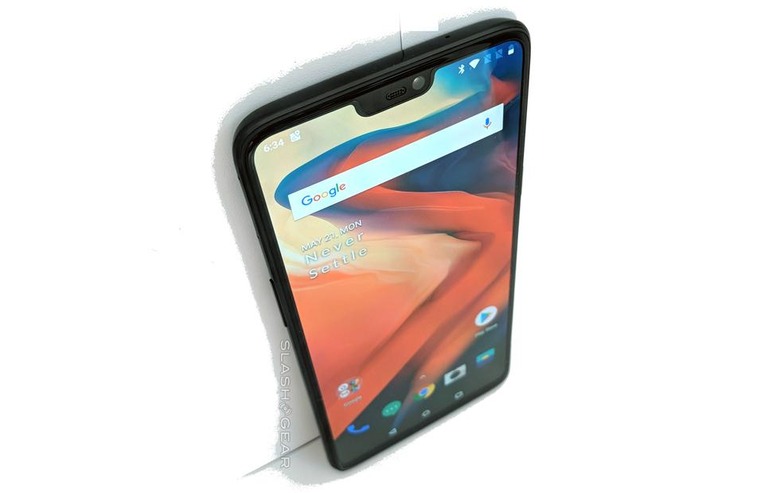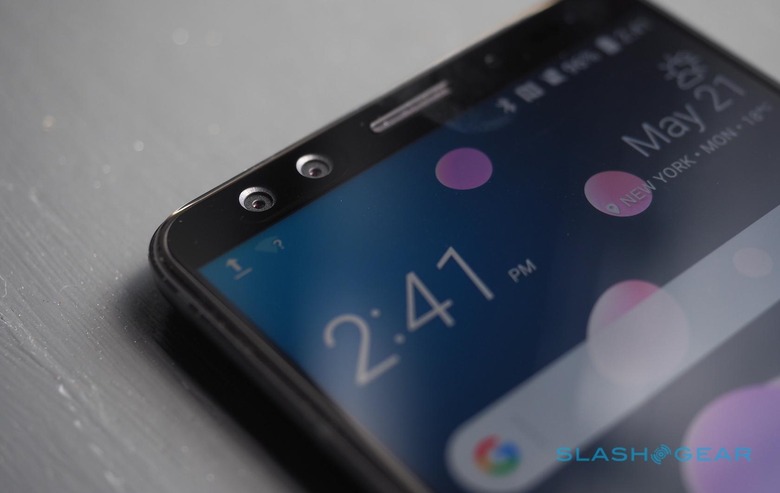The Pixel 3 And Pixel 3 XL Won't Settle The Notch War
Google's Pixel 3 and Pixel 3 XL will again be differentiated by more than just screen size, with notch-haters forced to stomach the screen cut-out if they want the larger of the two flagship Android phones. Expected to debut in October 2018, the two new smartphones are the third generation of Pixel, Google's showcase for the best of Android and an unofficial roadmap for what it expects of its phone-maker partners.
As such, the reach of the Pixel range goes beyond just sales. Indeed, while a new Pixel is typically hotly-anticipated by smartphone enthusiasts, that eagerness doesn't necessarily translate to blockbuster sales. Instead the affect of Google's phones can be more about influencing third-party handsets than anything else.
For anybody hoping, therefore, that Google would use the Pixel 3 to settle the argument on display notches, there's going to be disappointment. According to Bloomberg, Google's 2018 phones won't be falling on either side of the notch battle. Instead, it'll be straddling it, with two display approaches.
According to people familiar with the current state of the Pixel 3 and Pixel 3 XL development, Google will hedge its bets on screen shape. The Pixel 3, it's suggested, will have a regular, rectangular touchscreen and traditional bezels, thicker top and bottom and narrower on the sides. However the Pixel 3 XL will have a larger touchscreen, "nearly edge-to-edge" according to the sources though still with a "chin" at the bottom, and a notch cut out of the top of the display.

That notch, as we've seen on other handsets like the iPhone X, OnePlus 6, and LG G7 ThinQ, will be used to accommodate the front-facing sensors and such that, for the moment, there's no other place for in a "bezelless" design. In the case of the Pixel 3 XL, the notch is said to be narrower horizontally than that of the iPhone X, leaving more space for notifications, icons, battery gages, and other such details flanking it on either side.
However it's also said to be "noticeably taller" than the notch on the iPhone X. "Google aims to eventually remove the bezels completely in a future Pixel," Bloomber reports, "but is retaining the notch and chin this year to keep stereo speakers on the front of the phone."
The Pixel 3 XL's notch will earn its keep in part by including not one but two front-facing cameras, sources say. However, Google apparently intends to stick with just one single camera on the rear. That'll be upgraded from the 12.2-megapixel camera on the Pixel 2 and Pixel 2 XL, it's said, but still rely on computational photography techniques to deliver features like "bokeh" background defocus.
Since the Pixel 2 launch, of course, Google has welcomed a sizable chunk of HTC's phone team into its fold. That workforce has been instrumental in developing the new Pixel 3 and Pixel 3 XL, it's said. HTC recently launched its own U12+ Android phone, which is notch-free; however, the company made clear to us that the decision to avoid the cut-out was based on availability of display panels, and shouldn't be seen as a decision for or against the design. Like the rumored Pixel 3 XL, the U12+ has a dual front camera system.

Google, it's rumored, might be switching to Foxconn as its manufacturing partner for the 2018 Pixel range. The Pixel 2 is produced for Google by HTC, while the Pixel 2 XL is produced by LG. Verizon is expected to again be the exclusive mainstream carrier partner in the US, though Project Fi support is expected too.
Why the mixed messages on screen notches? Though the display decision would-be Pixel 3 buyers will be forced to make may be reminiscent of 2017's choice, picking the warmer AMOLED of the Pixel 2 or the cooler, but larger P-OLED of the Pixel 2 XL, it's arguably more about demonstrating Android P's native cut-out accommodations.
The upcoming Android release has baked-in support for notched displays, with the ability to adjust layout automatically according to which sections of the screen are non-functional. That way, Google says, they won't try to show icons or messages where they can't actually be seen. App-makers, too, can build notch-awareness into their software, so that the UI will automatically lay out around a phone's cutouts.
As a showcase for Android P, therefore, one of 2018's Pixels having a notch and the other not is definitely a clear show-and-tell. All the same, that's likely to be small consolation to those who face the shopping cart decision.
